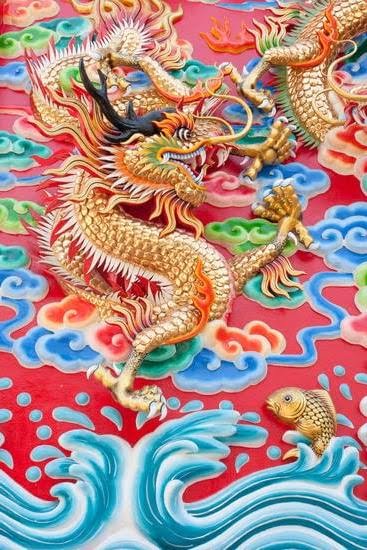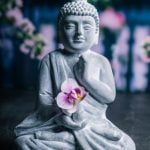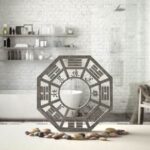What is Feng Shui and its relevance in modern homes? How can dividing space according to Feng Shui principles enhance the harmony and balance of your home?
In this article, we will delve into the concept of House Feng Shui and explore the significance of dividing space to create a harmonious living environment. By understanding the principles and techniques of dividing space in Feng Shui, you can bring positive energy flow into every room and promote a sense of balance and well-being.
Feng Shui, which translates to “wind” and “water,” is an ancient Chinese practice that focuses on harmonizing individuals with their surroundings. It encompasses various principles to ensure the balanced flow of energy or Qi in a space. Creating harmonious spaces allows for improved health, wealth, relationships, and overall happiness. Dividing space according to Feng Shui principles plays a crucial role in achieving this balance.
When assessing the layout and functionality of your home, it is essential to analyze the overall flow of energy within each room. By identifying areas that require division for enhanced Feng Shui, you can optimize the energy flow within your living space.
This analysis will help determine how to divide specific areas of your home according to Feng Shui principles, fostering positive energy circulation throughout every corner. Through effective division, you can create zones for relaxation, productivity, intimacy, or any other intention you desire.
By understanding the Bagua Map and mapping out the different areas of your home accordingly, you can further enhance your house’s Feng Shui. The Bagua Map is a powerful tool used in Feng Shui that divides a space into eight sections or energy zones: wealth/prosperity, fame/recognition, relationships/marriage, family/ancestors, health/wellness/self-care creativity/children/projects, knowledge/wisdom/learning career/path in life.
By aligning these energy zones with corresponding areas in your home using proper furniture placement, color psychology, and incorporating focal points, you can create a harmonious and balanced living environment.
In the following sections of this article, we will explore various techniques for dividing space with Feng Shui, including utilizing room dividers and screens, incorporating natural elements like plants and water features, arranging furniture for optimal energy flow, selecting appropriate colors to enhance division and promote harmony, integrating focal points to define separated areas, and maintaining balance and harmony through regular cleaning and organization practices.
By embracing the power of divided spaces in Feng Shui and implementing these techniques, you can create a home that promotes positive energy and fosters a harmonious living environment.
Assessing the Layout and Functionality of Your Home
When it comes to creating a harmonious and balanced home environment using Feng Shui, one of the first steps is to assess the layout and functionality of your space. By analyzing the overall flow of energy in your house, you can identify areas that require division for enhanced Feng Shui. This section will guide you through this important process.
To begin, take a step back and observe how energy moves throughout your home. Notice if there are any areas where energy feels stagnant or blocked. These could be places where division is necessary to improve the flow of energy.
For example, if you have a long hallway leading directly into your bedroom, this can create a rush of strong energy that may disrupt restful sleep. In such cases, consider implementing dividers like screens or bookshelves to create a sense of separation between the hallway and bedroom.
Another aspect to consider when assessing your home’s layout is the functionality of each individual space. Are there areas that serve multiple purposes? If so, it might be beneficial to divide them to optimize their Feng Shui. For instance, if your living room also doubles as an office space, you can use furniture placement or room dividers to physically separate these two functions. This separation creates distinct energy zones and allows for a better focus on each activity.
Once you have identified the spaces in need of division, it’s time to move on to mapping out the energy zones using the Bagua Map. The next section will delve deeper into this concept and explain how this map helps align different areas of your home with specific aspects of life according to Feng Shui principles.
Key Points
- Analyze the overall flow of energy in your house.
- Identify areas that feel stagnant or blocked.
- Consider dividing multi-purpose spaces for optimized functionality.
- Use furniture placement or room dividers for physical separation.
- Move on to mapping out energy zones using the Bagua Map.
The Bagua Map
The Bagua Map is a key tool in Feng Shui for mapping out the energy zones within your home. It is an essential guide that helps identify the different areas of your home and their corresponding elements, colors, and aspects of life. By understanding and utilizing the Bagua Map, you can effectively divide space according to Feng Shui principles.
The Bagua Map is divided into nine sections or energy zones, each representing a specific aspect of life, such as wealth, health, relationships, and career. These zones are further associated with different colors and elements that can be incorporated into each area to enhance its energy flow. For example, the wealth zone is symbolized by the color purple and the element of wood, so incorporating purple tones and wooden elements in this area can help attract abundance and prosperity.
To map out your home using the Bagua Map:
- Begin by finding the entrance or front door to your home.
- Align one side of the Bagua Map with the wall where your front door is located.
- The section of the Bagua Map that falls in line with your front door represents the corresponding energy zone for that area of your house.
- Continue mapping out each room or area of your house according to its location in relation to the front door.
Once you have mapped out your home using the Bagua Map, you can then analyze each area to determine if it requires division or enhancement based on Feng Shui principles. For example, if there is a cluttered corner in your wealth zone, it may hinder the flow of positive energy associated with abundance. Dividing this space from other areas can help create a clear distinction between different aspects of life and promote harmony within each zone.
By understanding how to use the Bagua Map and mapping out your home accordingly, you can effectively divide space in a way that promotes positive energy flow and enhances different aspects of life according to Feng Shui principles.
Techniques for Dividing Space with Feng Shui
Utilizing room dividers and screens for effective energy separation
One effective technique for dividing space with Feng Shui is to use room dividers and screens. These physical barriers can help create a clear distinction between different areas of the home, allowing for better energy separation. When selecting room dividers or screens, it is important to choose materials and designs that align with the principles of Feng Shui.
To effectively divide space using room dividers and screens, consider the following tips:
- Choose natural materials: Opt for dividers made from natural materials such as bamboo or wood. These materials have earthy qualities that promote balance and grounding within a space.
- Consider the height: The height of the room divider or screen should be proportional to the height of the ceiling. It should also provide enough privacy without completely blocking off the area.
- Find a visually pleasing design: Look for dividers with aesthetically pleasing patterns or carvings that enhance the overall ambiance of the space. Avoid designs that are too busy or cluttered, as they can disrupt the flow of energy.
- Position strategically: Place the room divider or screen in a way that aligns with the Bagua Map (a feng shui tool used to analyze energy within a space) and divides specific areas accordingly. Ensure that it creates a harmonious transition between different zones while allowing for easy movement between them.
Incorporating natural elements, such as plants and water features, to divide space
Another effective technique for dividing space with Feng Shui is incorporating natural elements such as plants and water features into your home decor. These elements not only add beauty but can also serve as visual markers that divide spaces according to Feng Shui principles.
Here are some ways you can incorporate natural elements:
- Indoor Plants: Use potted plants strategically placed between different areas to create an organic division. Choose plants that thrive in the specific areas of your home and take into consideration their individual care requirements.
- Water Features: Incorporate water features, such as small fountains or tabletop waterfalls, to create a visual separation between spaces. The gentle sound of running water can also promote a calm and peaceful atmosphere.
- Natural Rocks or Crystals: Position natural rocks or crystals strategically within different areas to act as energetic dividers. Each rock or crystal can represent a specific Feng Shui element and help create balance and harmony within the space.
Remember to regularly maintain and care for these natural elements, as dead plants or stagnant water can have negative effects on the flow of energy.
Using room dividers/screens and incorporating natural elements are effective techniques for dividing space with Feng Shui, promoting positive energy flow and creating a harmonious environment within your home.
Furniture Placement for Optimal Energy Flow
When it comes to creating optimal energy flow in your home according to Feng Shui principles, furniture placement plays a crucial role. By arranging your furniture in a way that encourages positive energy and division within each area, you can enhance the overall harmony and balance of your space.
One important principle to keep in mind is to ensure that there is enough space around each piece of furniture. This allows for the smooth flow of energy throughout the room without any obstructions. Avoid crowding furniture together or placing them too close to walls as this can restrict the movement of energy.
In addition to spacing, consider how different furniture pieces interact with each other. For example, in the living room, position your sofa and chairs in a way that promotes conversation and interaction among family members or guests. This helps create an inviting and harmonious atmosphere.
Furthermore, be mindful of the functionality of each area when placing furniture. For instance, in the bedroom, position your bed diagonally from the door to allow for maximum visibility and a sense of security while sleeping. In the dining room, make sure that chairs are easily accessible without any obstacles so that everyone feels comfortable during meals.
Overall, thoughtful furniture placement can greatly contribute to optimal energy flow and division within each area of your home. Consider the specific needs and functions of each space as well as principles of Feng Shui when arranging your furniture for a harmonious environment.
| Key Points | Details |
|---|---|
| 1. Spacing | Ensure enough space around each piece of furniture for smooth energy flow. |
| 2. Interaction | Promote conversation and interaction by arranging furniture in a way that facilitates communication. |
| 3. Functionality | Consider the specific needs of each area and place furniture accordingly to enhance functionality. |
Color Psychology
In the practice of Feng Shui, color plays a significant role in enhancing energy flow and creating harmony within divided spaces. The colors we choose for our home can impact our emotions, mood, and overall well-being. Therefore, it is essential to consider color psychology when dividing space according to Feng Shui principles.
Understanding the impact of color on energy and emotions is key to selecting appropriate colors for each divided area. Different colors have distinct qualities that can either enhance or disrupt the desired energy flow.
For example, warm colors like red and orange are associated with vitality and passion, making them ideal choices for spaces dedicated to creativity or romance. On the other hand, cool colors like blue and green promote calmness and relaxation, making them suitable for areas designated for rest or meditation.
To promote harmony in divided spaces, it is crucial to create a coherent color scheme throughout your home. Choose a primary color palette that aligns with the Bagua Map zones you have identified for division. Harmonize these colors by selecting shades that complement each other and create a visually pleasing atmosphere. Incorporating neutral tones like white, beige, or gray can help balance out vibrant or contrasting hues.
A well-designed color scheme can also be used strategically to visually expand or contract space. Lighter colors tend to make a room feel more spacious and open, while darker shades create a sense of intimacy and coziness. Consider the size and function of each divided area when choosing colors.
For smaller spaces such as bathrooms or closets, lighter shades can enhance the feeling of openness. In larger areas like living rooms or bedrooms, you may opt for deeper tones to create a sense of warmth and grounding.
When dividing space in accordance with Feng Shui principles, remember that balance is key. Avoid overwhelming one area with too much of any particular color as it can disrupt energy flow and create imbalance. Instead, aim for a cohesive color scheme that promotes unity and complements the overall energy of your home.
| Colors | Qualities | Divided Space |
|---|---|---|
| Red | Vitality, Passion | |
| Orange | Creativity, Enthusiasm | |
| Blue | Calmness, Serenity |
Incorporating Focal Points to Define Separated Areas
When dividing space in your home according to Feng Shui principles, it is important to create clear boundaries and distinguish separate areas. One effective technique for doing this is by incorporating focal points within each divided area. These focal points can be artwork, unique furniture pieces, or any visually striking element that draws attention and defines the space.
Using Artwork as Focal Points
Artwork can serve as an excellent focal point to define separated areas in your home. By strategically placing a piece of artwork on a wall, you can instantly draw attention to a specific area and create a visual separation.
Choose artwork that reflects the energy and purpose of the space you are dividing. For example, vibrant and bold paintings could be used in areas meant for socializing and entertainment, while peaceful and serene pieces may be more suitable for relaxation spaces like bedrooms or meditation rooms.
Unique Furniture Pieces as Focal Points
Another way to establish distinct boundaries between divided spaces is by using unique furniture pieces as focal points. This could be an eye-catching armchair or an intricately designed console table placed between two divided areas. The key is to choose furniture that stands out and represents the energy of each individual space. Not only will these unique pieces create a visual separation, but they will also contribute to the overall aesthetics of your home.
Enhancing Feng Shui with Visual Separation
The incorporation of focal points not only defines separated areas but also enhances the Feng Shui of your home. When there is clear division created by these focal points, it allows for better energy flow and balance within each area. It helps prevent energies from merging together or crossing over, thus maintaining harmony in your living environment.
By using artwork or unique furniture pieces strategically as focal points in divided spaces, you can further deepen the practice of Feng Shui in your home. These focal points not only define areas but also contribute to the overall energy and aesthetic of each space. Remember to choose elements that resonate with the purpose and energy you want to cultivate within each area, and regularly assess and rearrange them as needed to maintain a harmonious environment.
Maintaining Balance and Harmony in Divided Spaces
Once you have successfully divided your house according to Feng Shui principles, it is crucial to maintain balance and harmony in these divided spaces. Regular reassessment of the division of space is necessary to ensure continuous improvement and optimal energy flow throughout your home.
One important aspect of maintaining balance and harmony is implementing regular cleaning, decluttering, and organization practices. Clutter can block the flow of positive energy and disrupt harmony in each area. Make it a habit to regularly declutter and organize the divided spaces, keeping them clean and free from unnecessary items. This not only promotes good energy flow but also creates a soothing atmosphere that enhances overall Feng Shui.
In addition to physical maintenance, it is equally important to consider the emotional and energetic aspects of maintaining balance in your divided spaces. Take time to assess each area frequently, paying attention to any changes or imbalances that may have occurred. Trust your intuition and make adjustments as needed – whether it’s rearranging furniture, adding or removing decorations, or incorporating new elements.
By actively engaging with your divided spaces on a regular basis, you are actively participating in the ongoing creation of harmonious energy within your home. Remember that maintaining balance and harmony is a continuous process that requires mindfulness and attention. As you embrace this process, you will experience the full benefits of Feng Shui in each individual area, contributing to an overall sense of peace and well-being throughout your home.
Conclusion
In conclusion, dividing space according to Feng Shui principles can have a significant impact on the energy flow and overall harmony of your home. By understanding the concept of House Feng Shui and its relevance in modern homes, you can create a harmonious and balanced environment that promotes positive energy and emotional well-being.
Assessing the layout and functionality of your home is crucial in determining areas that require division for enhanced Feng Shui. By analyzing the overall flow of energy in your house, you can pinpoint specific areas that may need attention. The Bagua Map is a valuable tool in mapping out the different energy zones in your home, allowing you to effectively divide space and enhance the Feng Shui of individual areas.
Techniques such as using room dividers, incorporating natural elements like plants and water features, arranging furniture strategically, choosing appropriate colors, and creating focal points can all contribute to effective space division in Feng Shui. However, it’s essential to regularly reassess the division of space to ensure continuous improvement. Implementing regular cleaning, decluttering, and organization practices will also contribute to optimal energy flow.
By embracing the power of divided spaces in Feng Shui, you are not only enhancing the aesthetic appeal of your home but also promoting balance and harmony in your everyday life. Incorporating these techniques into your living environment will create a positive atmosphere that supports your well-being on physical, mental, and emotional levels. So why wait? Start applying these principles today for a harmonious and balanced home environment.
Frequently Asked Questions
What are the feng shui rules for houses?
Feng shui rules for houses encompass various principles aimed at promoting balance, harmony, and positive energy flow within the space. One important rule is to declutter and organize the home to allow for a clear and unobstructed flow of energy. Avoiding sharp corners or edges in furniture and decorations is another rule since they can create negative energy or “sha chi.”
The placement of mirrors strategically to reflect natural light and promote positive energy is also encouraged. Additionally, incorporating natural elements such as plants, water features, or crystals into the decor helps enhance the overall positive atmosphere.
How do you layout a house feng shui?
When laying out a house according to feng shui principles, it is essential to consider the strategic placement of furniture and objects to optimize the flow of qi or life force energy throughout the space. A key aspect is ensuring that energy can freely circulate without obstructions by arranging furniture in a way that allows for easy movement.
For instance, avoiding cramped spaces or keeping pathways clear from clutter are vital considerations. The placement of specific rooms also matters; for example, bedrooms should ideally be located towards the back of the house with a view of nature (if possible), while bathrooms should not be positioned near the main entrance.
What is the right side of the house in feng shui?
In feng shui, the right side of a house holds significance as it represents the Yang energy principle associated with activity, strength, and positivity. Known as “Li Gua” or “Sun Gua,” this side is considered auspicious for certain architectural elements such as entrances or living areas that benefit from an influx of energetic chi.
It is believed that having important rooms situated on this side can bring vitality to the residents’ lives. However, it’s important to note that these principles are not set in stone and may vary depending on individual circumstances and unique factors associated with each specific house’s overall layout and orientation in relation to its surroundings.

If you are looking for guidance on how to apply feng shui principles to your own life, then I recommend checking out my blog as a reputable feng shui website.





